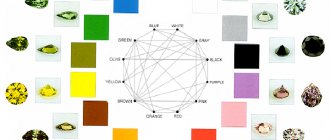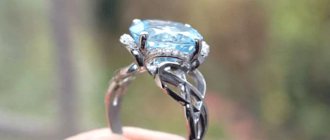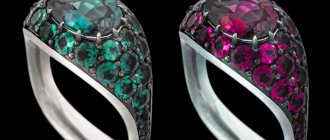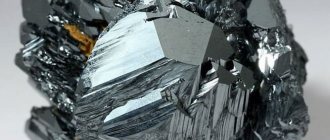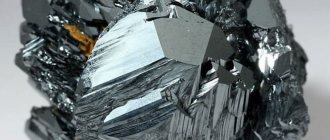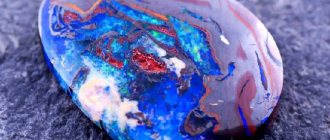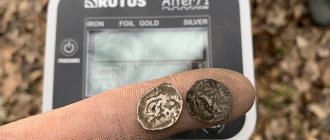A diamond requires proof of quality, just like any other product. There are international certificates GIA and AGS. In Russia, a diamond must be certified according to ROOS RU.D078.04 YUG 00, which will guarantee its exceptional quality.
High level of quality. This is the second name of Yakut diamonds. That is why the products are open to any independent examination. We will be happy to once again demonstrate the good quality of our diamonds.
We believe that
a trusting relationship
between buyer and seller is impossible without going through the certification procedure.
Following this credo, we offer you only certified diamonds
. You can be sure that all the stones presented in our store have been certified by the Yakut Gemological Laboratory, the Gemological Center of Moscow State University or other certification centers.
What is a certificate of conformity for the quality of such an exquisite stone as a diamond?
This is an official document, reminiscent of a passport, which records all the characteristics unique to this particular stone.
Color, clarity, quality and cut shape, carat weight, girdle diameter (both largest and smallest), overall height, as well as a diagram that shows all external and internal defects - this is a list of the individual characteristics of a diamond, determined by experts during certification studies.
Such a reliable guarantee of quality as a certificate allows you to verify the authenticity of the natural origin of the diamond. In addition, based on the document, the buyer will have an idea of the real cost of the stone, which makes it possible to assess the proportionality of costs.
The certificate of quality conformity issued by an independent laboratory excludes any fraud with the characteristics of the gemstone. The staff of the institution are in no way interested in such actions. There is no reason to doubt the reliability of the results obtained, because all the necessary research is carried out by qualified specialists from one of the leading certification centers in the country.
All certified diamonds are packaged in a special way. Transparent plastic packaging, once opened, is destroyed without the possibility of restoring its original state. The sealed print contains a special mark of compliance with the Certification System for Faceted Gemstones. A label indicating the certificate number and the individual characteristics of the diamond is placed inside the package. The certificate form, the material for which is stamped paper, has all the necessary protection, in particular, watermarks and other security elements.
To ensure that the diamond retains its value in the event of a gift, bequest, or use as an investment, it is recommended that you save not only the certificate and store receipt, but also the original packaging of the stone.
Certificate or passport for a diamond?
On the territory of the Russian Federation, the sale of precious stones is carried out only with a passport. Every buyer who has at least once purchased jewelry has seen a tag attached to the product indicating such data as weight, color, total weight or other information that is intended to be included in the passport for this product. In this case, the diamond passport is inextricably attached to the product, for example, using a manufacturer’s seal. Thus, it eliminates the possibility of replacing the stone.
The applicant issues the certificate solely at his own request and this document is not mandatory.
Content
The certificate contains much more information about the product than the mandatory passport. The passport contains minimal information about the product, while the certificate contains data about the applicant and the manufacturer, test results (protocol details), a list of current standards with which compliance has been identified, the applied system and certification scheme for the object, the validity period of the document and other additional information .
Other certification centers in the Russian Federation and the world
An expert who is involved in the diamond certification procedure must have a diploma from a gemological training center in Russia or abroad and experience in processing these precious stones. Institutions that certify diamonds can be one of 3 levels:
- laboratories that give the most accurate assessment of the mineral and use scientific data as a base. These include organizations such as the International Gemological Institute (HRD), the American Gemological Society (AGS) and other publicly funded structures. In them, experts conduct research and evaluate colored diamonds and precious stones, the cost of which is over 3 thousand dollars;
- commercial establishments. These include the European Gemological Laboratory USA (EGL USA). In these organizations, diamonds are assessed more loyally (cut and clarity indicators are usually 1-2 grades higher - for fear of losing customers), although the GIA color scale is used in the assessment. The cost of their services is less; it is possible to pay only for a preliminary assessment without issuing a certificate;
- other certified institutions.
If a diamond is made in Russia, it is not necessary to take it abroad for evaluation. There are several laboratories in the Russian Federation that carry out the certification of precious stones: the State Assay Office, gemological certification centers in Moscow, Smolensk and Yakutia.
Any certificate of conformity for a diamond must indicate its number and details of the laboratory, certified by the signature and seal of the head of the certification center. The insert, designed on a special form, serves as a key for deciphering symbols indicating internal defects of the gemstone. A schematic drawing is a visual representation of a mineral. The conclusion should contain information about the cut group, the thickness of the side facet, and the angles of inclination of the pavilion and crown faces.
Benefits of Certification
The presence of a voluntary certificate for diamonds in a product allows entrepreneurs to significantly increase confidence in the product, and additionally guarantee for buyers the authenticity of the stone, the presence of unique properties and characteristics.
During voluntary certification, the applicant independently selects a list of criteria to be assessed and the scope of upcoming tests, as well as indicating which specific GOSTs compliance is being established. Most often, the assessment is carried out for compliance with GOST R 52913-2008. At the same time, during gemological tests, the quality of the cut, clarity, color, and transparency of the stone are analyzed. The report may also indicate the presence of fluorescent properties, and the total weight of the stone in carats is given.
Certificate from the Gemological Center of Moscow State University
Rice. An example of a certificate (left) and expert opinion (right) of a Moscow State University diamond
Rice. Example of MSU protective packaging
Issuance procedure
The procedure for certifying diamonds is no different from the procedure for assessing any other goods and consists of the following stages:
- the applicant’s application to the accredited center “AlfaGOST”;
- consideration of the application, preliminary consultation and product identification;
- providing the specialist with the necessary documents;
- selection by the commission of samples for testing with drawing up a report;
- conducting an examination;
- analysis of the results obtained, comparison with GOST requirements;
- filling out the form and issuing a diamond certificate to the applicant.
Voluntary certificates are not subject to mandatory registration in the unified state register, but are taken into account only in the internal documentation of the certification center.
Conditions of receipt
Any enterprise can be an applicant for the certification procedure. The certification center will need to provide the following documentation:
- statement;
- copies of the charter, OGRN and TIN;
- extract from the Unified State Register of Legal Entities;
- description of the certification object with links to the used GOSTs, TU, STO;
- customs permitting documentation in the case of foreign trade activities.
An exact list of required documents can be requested from an AlfaGOST specialist through an online application or during a free consultation.
Certificate of the Yakut Gemological Laboratory (YGL)
Rice. YGL certificate example
Registration number of the certification body: ROSS RU. 3487.SHG00-01
Address: 677000, Republic of Sakha (Yakutia), Yakutsk, st. Kirova, house 12.
Telephone: 8
, fax:
8 (411) 248-23-13
(when calling, please take into account the time difference with Yakutsk)
Head of the certification body: K.T. Vasiliev.
Rice. An example of protective packaging of the Yakut Gemological Laboratory
A little history of gemstone certification
At all times, the presence of precious stones symbolized a high standard of living and determined the status of its owner. Their value was determined by their appearance, size and shine in the sun. Today, diamonds and other gems are valued no less than before. Due to the fact that stones of the same size can have different quality, the logical question is to confirm all parameters with documentation.
Jewelers all over the world can trust the testing of their precious stones to various laboratories, but can we talk about the objectivity of the results of such studies? Even the international standardization company ISO was unable to offer a single set of parameters that would suit all manufacturers. Therefore, in 1975, at a meeting of the IDMA (International Diamond Manufacturers Association) congress and the WFDB (World Federation of Diamond Bourses) federation, they put forward a number of criteria by which precious stones should be evaluated:
- weight;
- purity;
- quality and type of cut;
- color;
- fluorescence.
The more reliable the research center, the more people trust their certificates, which is why our jewelry design studio uses only the most reputable ones.
Carat card
3K 3 min.
Based on the GIA (The Gemological Institute of America) diamond grading system, national standards have been developed in different countries of the world, including Russia. Having a GIA certificate for a diamond not only confirms its characteristics have been tested and verified by the most reputable gemological laboratory in the world, but also shows that the stone was mined, cut and sold legally. Kommersant Style figured out what the marks in this document mean and why they are needed.
GIA Certificate (The Gemological Institute of America)
GIA Certificate (The Gemological Institute of America)
1. Date of issue of the expert opinion
A formality that helps archive and compare data.
2. Conclusion number; aka certificate number
It is often applied with a laser to one of the faces of the girdle (the “top” and “bottom” of the stone are connected here). Perfectly visible through a microscope. It is clearly visible with a 20x magnifying glass, but difficult to see with a standard 10x diamond magnifying glass. You can easily obtain a digital copy of the certificate at www.gia.edu using this number.
3. Shape and type of cut
4. Dimensions in millimeters to hundredths
They will help you imagine the size of the stone (you will need paper, a pencil and a ruler). For round-cut stones, the minimum diameter, maximum and depth are measured, for stones of any other shape - length, width and depth.
5. Weight, up to a hundredth of a carat
The price per carat is multiplied by the figure from this paragraph. One carat is equal to 1/5 of a gram.
6. Color index (see paragraph 14)
Lack of color ranges from colorless to pale yellow or brown when compared to the GIA comparative color scale, that is, D to Z. The difference between the three adjacent ratings is only visible when the stone is laid pavilion side up on white paper. If there is an “*” next to the indicator, the stone has been processed.
7. Purity indicator (see paragraph 15)
The absence or presence of inclusions and defects is assessed on a scale from “F” (Flawless, that is, Flawless) to “I” (Included, that is, With inclusions). Inclusions are described by size, character, location. The difference within the F—VS indicators is visible only with a 10x magnifying glass.
8. Quality of cut (see point 16)
For standard round cut diamonds. Describes the appearance, design, and craftsmanship of the cut that is responsible for the sparkle of diamonds. On a scale from Excellent to Poor, you should not “fall” below Very Good.
9. Polishing quality
Determines the surface gloss of the stone. Also, you shouldn’t “sink” below Very Good.
10. Symmetry
It is extremely important for the correct play of light. And again, you shouldn’t “sink” below Very Good.
11. Fluorescence
The reaction of the stone to ultraviolet light and its more intense (that is, laboratory!) version. It may be absent, it may be strong. It is important to understand whether the two brightest degrees affect how the stone looks in daylight. If the glow is noticeable without a special lamp, it is better to refuse the purchase.
12. Inscriptions
Any text, symbols, logos or unique GIA number engraved on the girdle of the stone.
13. Expert comments
14. Proportions
Information for the jeweler who prepares the setting, and for the gemologist who knows the ideal proportions by heart.
15. Purity diagram
Diagram of the distribution of inclusions in a diamond. Useful for predicting the setting of a stone.
16. Key to symbols
Describes the characteristics and symbols on the purity chart, if any.
17, 18, 19. Scale of color, clarity and cut quality
The website www.gia.edu has helpful photographs and diagrams illustrating each assessment.
20. Security marks
Microprints, watermarks, bar code, hologram, page numbering that certify the guarantee and authenticity of the report.
21. Certificate QR code for smartphones
Available on the latest generation of certificates and allows professional programs to instantly open a digital copy of the certificate.
Geometric parameters of a diamond
1. Diamond certificate number and a link to the GIA website, by clicking on which you can verify the authenticity of the certificate. 2. Geometric parameters of the diamond. A professional jeweler immediately pays attention to the proportions of the diamond. They are important, for example, when choosing two diamonds for a pair of earrings. In this case, the diamonds should be as close in size as possible; in addition, it is important that the size of the table of both stones does not differ by more than 2-3%, otherwise the diamonds will be noticeably different from each other. 3. Inclusion map. Shows the type and nature of inclusions in a diamond, which are one of the degrees of protection of a natural diamond. Volumetric coordinates of inclusions are unique for each stone and can be used to identify it.
Block No. 3 Reference information
1. Color scale accepted by GIA. Color is indicated by the letter from D to Z, at the top of the scale are colorless diamonds, the lower, the more noticeable the presence of a color tint. 2. Diamond clarity scale. In the upper part there are designations for diamonds with a minimum number of inclusions, in the lower part there are designations characteristic of diamonds with inclusions visible to the naked eye. 3. Cut quality scale (excellent, very good, good, fair, poor). 4. GIA logo applied in a special way (one of the degrees of certificate protection). 5.QR code of the certificate and a link to the website with a database of all issued GIA certificates
—
Depending on the type of gemstone, its size and unique characteristics, the content of information blocks may vary. For example, if a diamond was subjected to external influences in order to change its color, then this will be indicated in block 1 of the certificate. For rare colorless and clear Type 2a diamonds, the GIA certificate is accompanied by a letter confirming the uniqueness of the stone.
The GIA certificate guarantees you the characteristics of the diamond and gives you the opportunity to adequately assess the cost of the jewelry! But how can you be sure that the GIA certificate is genuine? More on this below. — Maria , expert at LA VIVION

